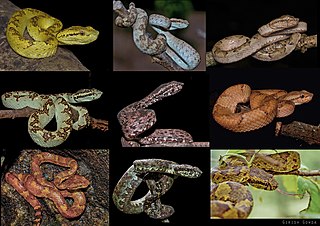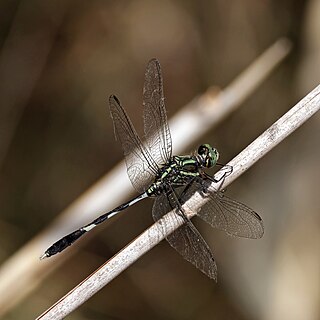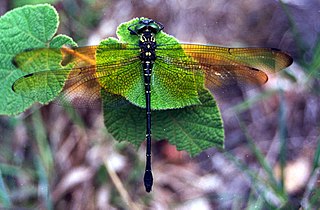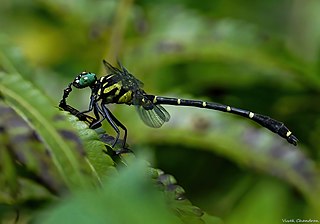
Craspedocephalusmalabaricus, commonly known as Malabar pit viper, Malabar rock pit viper, or rock viper, is a venomous pit viper species endemic to the high-moderate elevations of Western Ghats of southwestern India. Recently this species complex was split into three different species, Craspedocephalus malabaricus, Craspedocephalus travancoricus, Craspedocephalus anamallensis.

Hortus Malabaricus is a 17th-century botanical treatise on the medicinal properties of flora of the Malabar coast. It was compiled by Hendrik van Rheede, the Governor of Dutch Malabar from 1669 to 1676. Itty Achudan, a distinguished herbalist from the ancient traditional Ezhava physicians of Kerala, was Van Rheede's key informant who disclosed the Ayurvedic traditional knowledge about the plants of Malabar to him. Hortus Malabaricus was published posthumously in Amsterdam between 1678 and 1693. English and Malayalam translations of Hortus Malabaricus were published by University of Kerala in 2003 and 2008 respectively, which was largely due to the efforts of Professor K. S. Manilal, an Emeritus of the University of Calicut who devoted over 35 years of his life to research for the translation and annotation work of the original text of Hortus Malabaricus in Latin.

Orthetrum sabina, the slender skimmer or green marsh hawk, is a species of dragonfly in the family Libellulidae. It is widespread, being found from south-eastern Europe and North Africa to Japan and south to Australia and Micronesia.
For others uses see Frederick Fraser (disambiguation)

Kattungal Subramaniam Manilal is an Emeritus of the University of Calicut, a botany scholar and taxonomist, who devoted over 35 years of his life to research, translation and annotation work of the Latin botanical treatise Hortus Malabaricus. This epic effort brought to light the main contents of the book, a wealth of botanical information on Malabar that had largely remained inaccessible to English-speaking scholars, because the entire text was in the Latin language.

Lestes praemorsus is a damselfly species in the family Lestidae. It is commonly known as the scalloped spreadwing or sapphire-eyed spreadwing. It is very widely distributed from India to China and south to New Guinea.

Lestes viridulus, the emerald-striped spreadwing, is a damselfly species in the family Lestidae, the spreadwings. It is native to Bangladesh, India, and Thailand.

Indolestes gracilis is a species of damselfly in the family Lestidae. It is known only from Sri Lanka, South India and Cambodia.

Lestes elatus is a species of damselfly in the family Lestidae, the spreadwings. It is known commonly as the emerald spreadwing. It is native to India, Thailand and Sri Lanka.

Pseudagrion malabaricum, Malabar sprite, jungle grass dart, is a species of damselfly in the family Coenagrionidae. It is found in India, Sri Lanka, and Myanmar.

The emerald cascader or iridescent stream glider is a species of dragonfly in the family Libellulidae. It is widespread in many Asian countries.

Mortonagrion varralli, the brown dartlet, is a species of damselfly in the family Coenagrionidae, endemic to India. The insect is named after Frederic Charles Fraser's wife, Ethel Grace Fraser (1881-1960), a constant companion of his collecting trips in India.

Euphaea fraseri, Malabar torrent dart, is a species of damselfly in the family Euphaeidae. This species is endemic to the Western Ghats; known to occur in various locations up to Goa.

Lestes nodalis is a species of damselfly in the family Lestidae, the spreadwings.

Lestes dorothea, the forest spreadwing, is a damselfly species in the family Lestidae. It is distributed from south and northeast India to Thailand and Malaysia.

Lestes patricia is a species of damselfly in the family Lestidae. It is native to Western Ghats in India.

Chlorogomphus campioni, Nilgiri mountain hawk, is a species of dragonfly in the family Chlorogomphidae. It is known only from the Western Ghats of India. The distribution of the species is restricted to South Canara and Kodagu in Karnataka, Malabar in Kerala and the Nilgris in Tamil Nadu.

Chlorogomphus xanthoptera is a species of dragonfly in the family Chlorogomphidae. It is known only from the Western Ghats of India, to the south of Palakkad Gap, including Anamalai Hills, Tirunelveli Hills, Munnar and south of Travancore.

Burmagomphus cauvericus is a species of dragonfly in the family Gomphidae. It was earlier known only from the banks of Kaveri river in Kodagu district. It is recently recorded from Kerala too.


















